

 The South African
The South African
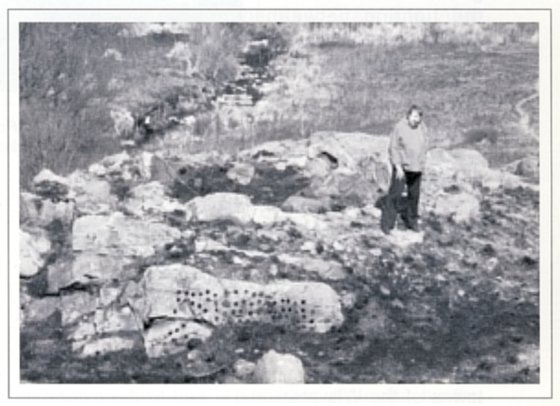
Foundations of the Boksburg Blockhouse.
Early in 2010 an old resident of Boksburg, the late Rembrandt Strydom, notified the Boksburg Historical Association that Copper Eagle Mining Aggregates were undertaking earth-moving operations close to the site of the Boksburg Blockhouse dating from the South African War (1899-1902).
An investigation was undertaken which led to the re-discovery of the Boksburg Blockhouse foundations and some rocks with engravings on them, which are believed to have been made by British soldiers who were stationed at the blockhouse. One week after the remains were re-discovered, Copper Eagle Mining Aggregates ceased operating on the East Rand Proprietary Mine (ERPM) railway embankment in the immediate vicinity of the foundations and moved their operations to the portion of the embankment that lies close to the stream that flows between Parkdene and Libradene and flows into Cinderella Dam. The danger exists, however, that Copper Eagle Mining Aggregates or another entity may at any time resume operations near the blockhouse foundations and may destroy or cover the foundations and engraved rocks.
Background
The South African (Anglo-Boer) War that commenced in October 1899 and ended formally on 31 May 1902 caused immense bitterness between groups of the South African population. The war lasted only three and a half years but exerted a profound influence on political and racial developments in South Africa for well over a hundred years. It can be argued that the racial policies adopted by the Nationalist Government after it came to power in 1948 were a direct consequence of the festering bitterness caused by the South African War.
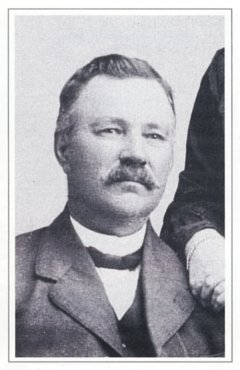
After the last pitched battle between Boer and British forces in the South African War that took place at Berg-en-Dal outside Machadodorp in August 1900, the British Commander, Lord Roberts, believed that the Boers were defeated and formally annexed the Zuid-Afrikaansche Republiek (ZAR) for the British Crown. Many Boers, feeling that their cause was lost, surrendered to the British after this battle. They included Commandant Dercksen of the Boksburg Commando. Others, however, took to the veld and commenced a guerrilla struggle that only ended on 31 May 1902. As the struggle continued, atrocities mounted: Boers blew up trains and executed emissaries sent to them by the British to negotiate peace, such as Meyer de Kock. The British, in turn, executed Boers who were found wearing cast-off British clothing and 'rebels' from the Cape and Natal. But the greatest bitterness was caused by the British 'scorched earth' policy, whereby homes were razed to the ground, livestock slaughtered, crops burnt, and thousands of civilians, both white and black, were incarcerated in hated concentration camps which caused a greater loss of life than the fighting between combatants. One of these camps was located in Boksburg.
South African War heritage sites in Gauteng
In late 1900, Boers attacked the New Kleinfontein Mine and mine houses on the farm 'Driefontein'. As a result, a mines defence unit - the Rand Rifles - was formed to protect gold mines from attack. The British occupying forces also decided to build fortifications along the Johannesburg-Pretoria railway line and road and along the line of the Randfontein-Springs 'Rand Tram' line. These fortifications, or blockhouses, built along the Witwatersrand railway lines appear to be the first of what later grew into a grid of about 8 000 blockhouses countrywide. To guard the open spaces between blockhouse lines, the British also erected South African Constabulary (SAC) posts. The map from Leo Amery (ed) The Times History of the War in South Africa, shows the local blockhouse lines running next to railway lines and the SAC police post lines in open veld. By July 1901, a constabulary post line stretched from Heidelberg via Springs to Eerstefabrieken and, by November 1901, a similar SAC line ran from Greylingstad to Wilge River Station.
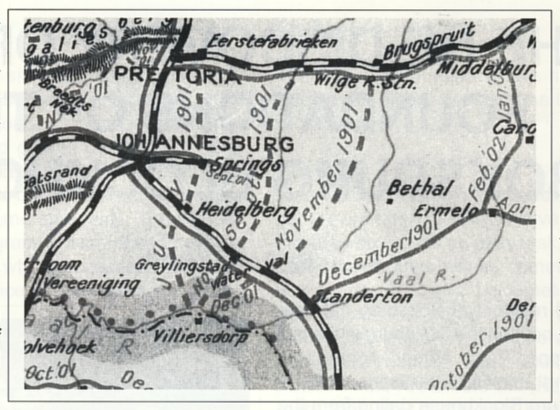
There are not many heritage sites associated with the South African War - or indeed photographs of such sites - that survive on the Witwatersrand in southern Gauteng. This is partly owing to the paucity of military actions that took place in this region during the Warmost of the Boer forces withdrew without a fight towards Pretoria when the British forces occupied the towns of the Witwatersrand - and to the extensive development that has since taken place in this area.
During the British occupation of Boksburg from June 1900 to May 1902, the British built a so-called 'refugee camp' (or concentration camp) for black residents in the area north of what was then Boksburg Station (later re-named Boksburg East Station). The precise location of this concentration camp has been lost and it is not known if any gravestones or other artefacts from the camp still exist. After the South African War, veterans of the Boksburg Commando built a monument in the grounds of the Dutch Reformed Church building, the 'Klip Kerk', south of Voortrekker Street, Boksburg. This monument includes bricks inscribed with the names of contributing veterans, as well as a record of the names of Commando members who lost their lives in the War. It is the only known artefact associated with the South African War that survives in Boksburg.
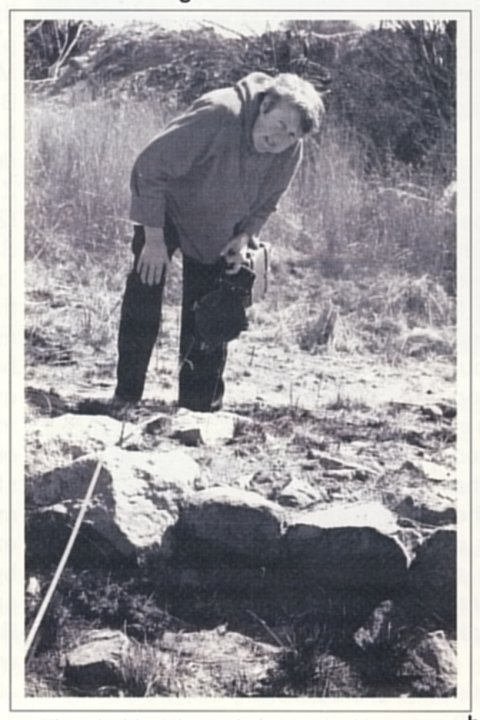
The Boksburg Blockhouse
Most surviving blockhouses are of multi-storey stone construction (like the Modder River and Witkop blockhouses), but the majority of blockhouses built were of a lighter construction, the 'Rice' pattern, made of concentric corrugated iron walls packed with gravel. The existence of the Boksburg Blockhouse is known from a rare and highly collectable tinted postcard that was published by Sallo Epstein & Co. It shows that the blockhouse consisted of a rough stone foundation surmounted by a circular brick wall of about twelve courses, with a hexagonal corrugated iron roof on top. A few individual bricks are visible on the postcard.
The doorway had a roughly-hewn capstone on top; it is not possible to see from the postcard if a door was fitted. The upper brick wall was pierced at intervals with loopholes that appear to be two bricks high by about one and a half bricks wide, to allow the garrison to fire at attackers. Assuming the bricks to be about 9 inches (about 23 cm) in length, it is estimated that the circular brick wall on top had a diameter of between 5,6 and 6,3 metres, and that the stone foundation had a diameter of between 7,5 and 8,4 metres.
It is not known exactly when the Boksburg Blockhouse was built, or exactly where it was sited. Older residents believed that it was located somewhere to the south of Boksburg Lake, but no one alive can recall ever seeing it. Some believed that it was demolished by the then Boksburg Council when Rondebult Road was extended over the GermistonSprings railway line in the mid-1990s. Others believed that the blockhouse foundations survived somewhere to the south of the extension of Rondebult Road, possibly close to the MacDonald's restaurant.
Finding the foundations
When Copper Eagle Mining Aggregates commenced processing aggregate from the ERPM railway embankment south of Boksburg Lake, a concerted effort was made to find the blockhouse foundations. By cutting back grass and shrubs in an area close to where inscribed rocks had been found fifteen years earlier, a circular foundation with a diameter of between 7,5 and 8,5 metres was found, with walls about 30cm high, on a headland immediately next to the river. It is very difficult to positively identify any of the remaining foundation stones. There are three stones near the location of the doorway, which may have been the door threshold, but the foundation is almost indistinguishable from nearby rocks. Positive identification was only possible by the comparison of existing rocks with those in the old postcard.

Careful examination of rocks marked A, B, C, D and E - and especially a sixth, un-marked, rock immediately in front of rock 'A' - showed that the rocks in the veld matched those in the postcard. In particular, rock 'A' and the unmarked rock in front of it have distinctive shapes. Two of the rocks, 'A' and 'E', like other rocks in the area, have had rows of holes drilled into them since the blockhouse photograph was taken, presumably during mining operations, and those on rock 'E' have obliterated the original inscription. Tellingly, a number of rock outcrops in the immediate vicinity, including a large rock approximately one and a half metres long, have names and numbers engraved on them. Names appear to include Brown, Yates, R Clark and pte Lister and the force numbers 5802, 6323 and 6828 may be represented. It is, however, very difficult to identify any names or numbers with certainty.
The blockhouse site is strategically very well positioned. It is on an outcrop about twenty metres above the river and would have been very difficult to attack. The deep river valley would have enabled Boers to approach very close to Boksburg and to strike at the centre of the town - the Courthouse, the prison and the Assembly Hall.
It is known that the Heidelberg Commando continued to operate in the hills of the Suikerbosrand until the last month of the war. Most of the mines at the time - Blue Sky, Angelo, Comet, Driefontein, Balmoral, and Witwatersrand Gold Mine - were situated to the north of the 'Rand Tram' line. After November 1900, these mines were all guarded by men from the Rand Rifles. The cost of maintaining the Rand Rifles guards was paid by the various mines. If the Boers intended raiding Boksburg after December 1900, the most logical approach would have been from the direction of the Suikerbosrand in the south, over what was mainly open veld. Positioned where it was, the blockhouse would have posed a formidable threat - the embrasures in the blockhouse wall had a direct line of fire over the riverbed for about a kilometre.
Early maps and aerial photos were examined to try to determine when the blockhouse was demolished. Even early versions of map 2628AA do not show any ruins at the blockhouse site. The earliest aerial photographs available, which date from 1938, also do not show any trace of a building at the site, but the resolution of these photographs was quite poor and they do show a slightly shaded rectangular area near the blockhouse site, which might indicate different ground cover or fencing, walls or hedges. The possibility exists that, in 1938, the blockhouse site was fenced off.
No military engagements are known to have taken place at the Boksburg Blockhouse. Yet the site nevertheless requires further investigation.
Photographic addendum
In July 2020 Andries Kruger, a municipal engineer in Boksburg, sent the following photographs as an update to this story:
"As the Council and developers are busy widening a road closeby and new housing project
I decided to go and have a look to see if I could locate it."
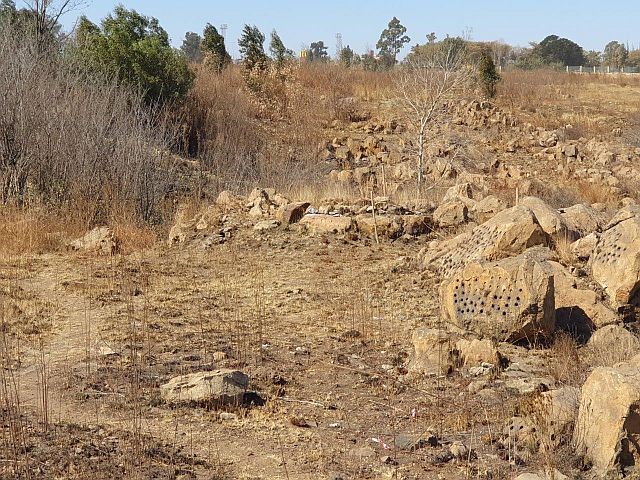
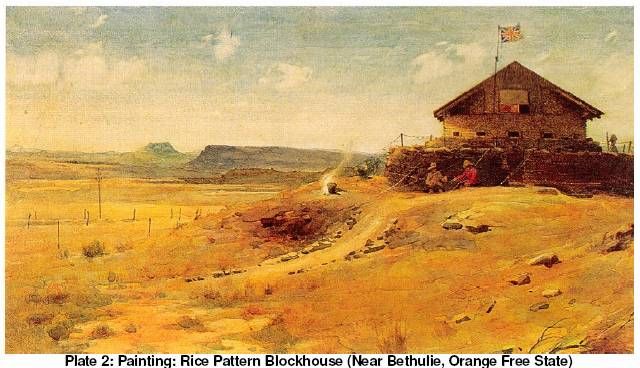
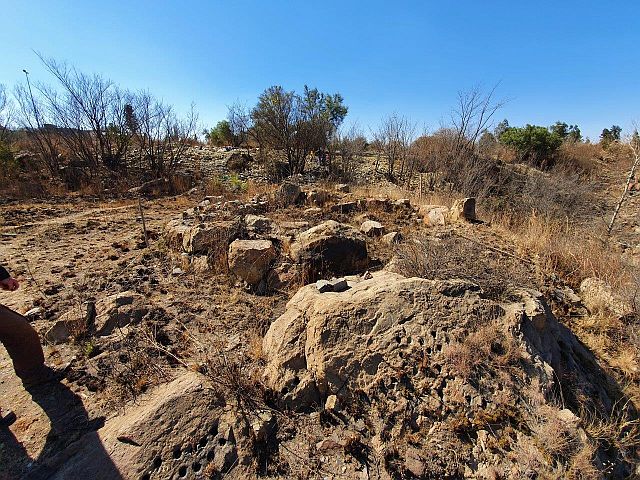
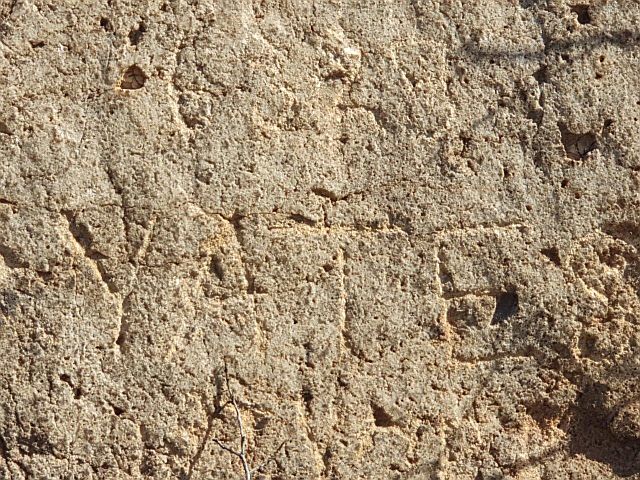
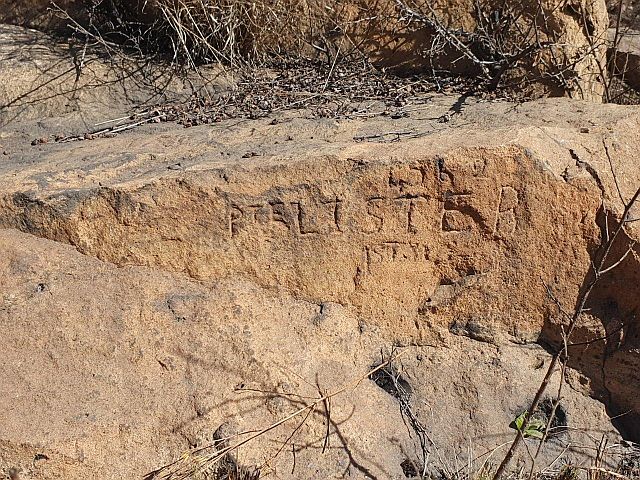
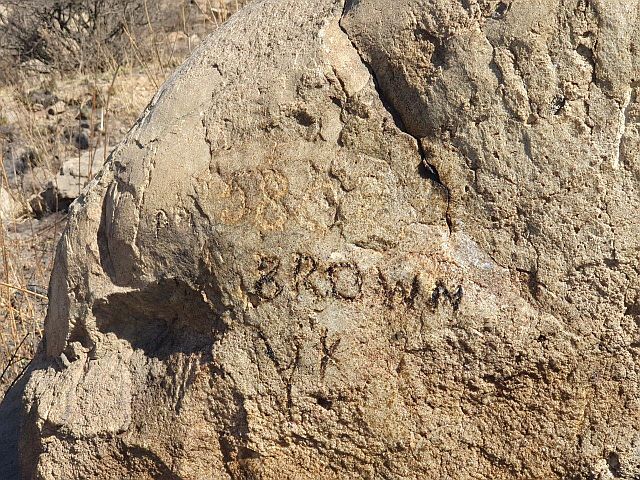
Return to Journal Index OR Society's Home page
South African Military History Society / scribe@samilitaryhistory.org